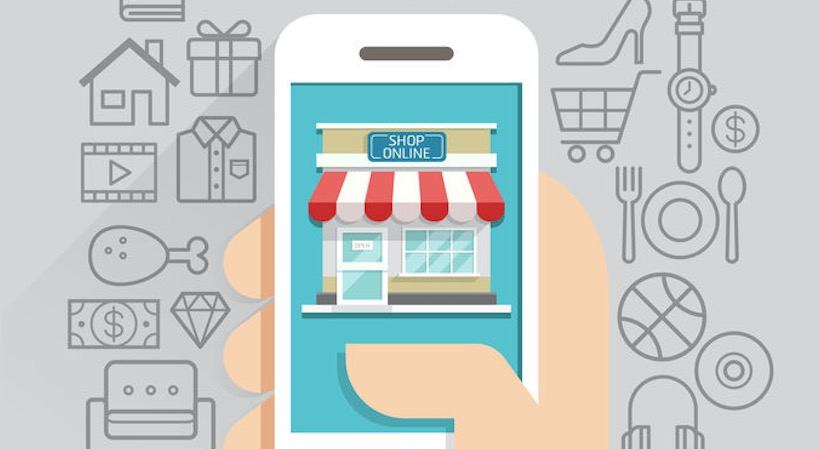In today’s retail world, increasingly more and more transactions are occurring online. Add to this the fact that some of the world’s biggest retailers are racing to increase their share of online sales revenue, and the pressure to conduct business online is more intense than ever before.
Currently, 14 percent of all transactions are estimated to occur online, up from 9 percent in 2017.
With e-commerce sales growing 15 percent in 2018, the time is now for brick-and-mortar businesses to undergo the necessary transformations to move online.
To accomplish the transition from brick-and-mortar to online, utilize three key strategies:
Related: Why Brick-and-Mortar Startups Need to Strategize Search Rankings Differently
Embrace Amazon
Most small retailers are afraid of Amazon, and there is good reason to fear the e-commerce juggernaut. But, Amazon is also where all the action is online. Importantly, one in four Americans have Amazon Prime. This is a huge advantage when partnering with Amazon.
Using Fulfillment By Amazon services allows retailers to leverage Amazon as the number one customer acquisition source. Your organization doesn’t have to figure out how to accomplish one- or two-day shipping, but can instead ship your products directly to Amazon – just like any other retailer – and let them manage the fulfillment of individual orders.
This has the additional benefit of allowing your organization to tap into Amazon’s global fulfillment network, should you choose to fulfill orders internationally. The most helpful part of launching products for your brand on Amazon is that there is already significant traffic and demand for almost all products online.
That said, there are a few things to be wary of when selling on Amazon. You need to ensure you have a strong brand enforcement strategy, meaning you lock up with legal agreements and use Cease & Desist letters to deter other Amazon Professional Sellers from selling your products on Amazon.
It is very important to have a good understanding of the unique idea of Amazon’s “Buy Box.” This is where Amazon pits your channel and existing wholesalers against you by allowing them to sell your product at a lower price to capture online sales. Many brands with a well-developed retail operation are often surprised to find how difficult it can be to enforce your control over your SKUs. Doing so requires strategic insight on how best to manage Amazon if there are already listings of your SKUs online (created by other Amazon Sellers who have access to your inventory).
Another key insight is to ensure you protect your profitability before launching your SKUs on Amazon. Recognize the costs of business on Amazon and understand how to create a well-thought-out strategy of merchandising some, but not all, of your products on Amazon.
This includes making the critical decision of whether or not you sell directly to Amazon (called Vendor or 1P) versus selling directly on Amazon’s platform as an Amazon Professional Seller (called 3P).
Utilize email marketing and social media to build an audience
The next recommendation for brands looking to go online is to understand the importance of an email list. Building an audience by email and social media tools enable brands to quickly create net profits on demand, simply by communicating an offer to their loyal fan base and to prospective customers.
There are a number of ways that savvy marketers use email marketing and social media to acquire users, but a good rule of thumb is to target spending to less than $1 per lead, called your Cost Per Lead.
Also, be sure to measure your conversions into sales so you can understand the ability to generate sales consistently from your audience. For email, most brands should be generating anywhere from 10 percent to 20 percent of revenue from this communication method. And, one of the biggest benefits of creating a large email list or social media audience is that you can perform outreach for a low cost (or nearly no cost) on an ongoing basis.
It’s also important to recognize the power of data and segmentation. With most email automation tools and large advertising platforms like Facebook and Google, there are fantastic ways to segment and learn insights about the demographic and psychographic makeup of your ideal customers.
Using this data and segmenting your audience into subgroups where you can target them with more relevant messaging will go a long way toward building your online presence.
One example is a customer reactivation campaign. Simply by asking your customers who have not recently purchased a product to purchase a similar product in your portfolio, you can reactivate around 15 percent of your customers, quickly increasing revenue and generating more brand loyalty.
Another great example is to segment out your most profitable and highest-value repeat buyers, and put this data into an advertising platform to use a feature called a lookalike audience.
This feature allows marketers to rely on vast sets of customer data to find additional new customers who look like your best, most profitable customers for targeting your ads. This is a very common method for improving the targeting of your new online lead generation tools and can quickly accelerate your net new customer acquisition for your online business.
Leverage your own direct to e-commerce website
Third, leverage an online platform like Shopify, WooCommerce or BigCommerce to set up an e-commerce website to sell directly to customers. Having an online presence where customers can purchase directly from you is a fantastic way to capitalize on the 365/24/7 always-on world we live in.
The advantages of having your own direct to consumer brand are numerous, but the most important include the ability to control the customer experience at checkout. By adding in up-sells and cross-sells with limited time offers, you can quickly increase the profit of an individual transaction.
This key metric is called the Average Order Value, and by focusing on improving your AOV you can find a way to drive increased sales from the same number of orders. An additional benefit of having a direct to consumer market is the ability to use new advanced marketing techniques like influencer marketing and Search Engine Optimization to rapidly extend your reach online.
With Instagram, Facebook and Google dominating such large shares of your customer’s attention, it is wise to learn how to harvest this with intelligent offers that entice influencers and followers to buy your products, as well as to capitalize on the massive search volumes of customers already searching Google for your product or solution.
Both of these strategies take time and persistence to generate large sums of income, but they are proven and when mixed with paid advertising methods, you can explode your growth and revenue quickly.
Sign Up: Receive the StartupNation newsletter!
Conclusion
All said and done, the time to move your brick-and-mortar business online is now. Take the actions necessary to determine your go-to market, and at the end of the day, recognize that it’s never too late to get started with your online presence.






